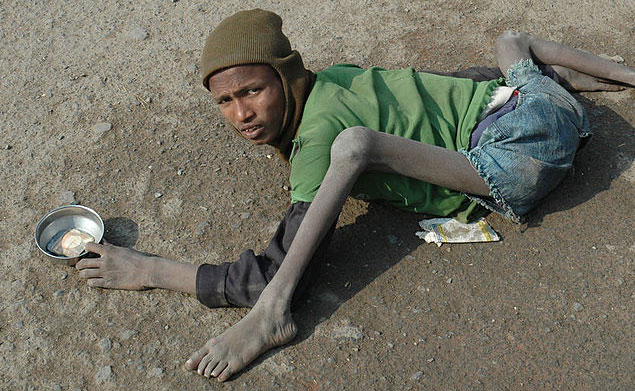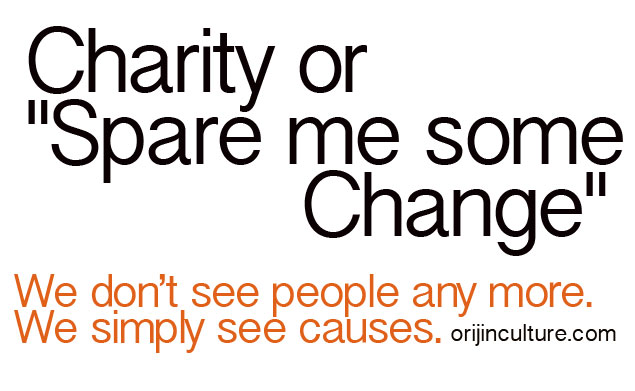Where do you go shopping when guilt comes knocking ?
I was sitting outside the library the other day trying to indulge myself a little bit in the fleeting sunlight as another frantic day as Drexel drew to a close. All around me people rushed to and fro in an endless wave of colors and styles that reflected the diverse nature of our urban campus. Soon, a friend joined me on my island of tranquility and we sat there for a while engaged in the age old pass time of people watching. Time passed and soon we became engaged in a heated debate on the nature of shoes and the brand names that dominate college campuses. My stance being that a shoe was just a shoe and that anyone who went shopping for a brand had bought into consumerism. Her stance was that style mattered and that my assertion that a shoe was just a shoe was a manifestation of my wash and wear mentality. As I scratched my head for an appropriate comeback, I looked across the street and noticed a girl holding a clipboard and stopping people to ask them to sign a petition.
Dressed in a dark blue hoodie, a knit hat, faded jeans, dark rimmed glasses, she petitioned people for signatures. Curiously, people kept finding creative ways to look busy so that they would not have to make eye contact with her and thus be forced/enticed into signing her petition and/or give her money. On the corner a little bit further away there was a black man sitting on the pavement. His face hagerred, his clothes tattered and his body language that of a man who has been on the receiving end of the worst that life has to offer. Armed with an alms bowl, he too sough the charity of strangers. Intrigued, I sat there and watched for an hour or so. Taking note of the number of people that stopped to sign the young lady’s petition versus give the old man some of their change. What I noticed pretty soon was that despite the fact that people dodged the young lady in increasingly creative ways (One guy “received” call that lasted only until he was just past her), more people stopped for her than saw the homeless man let alone stopped to give him change.
Curious to know what the young lady was doing differently, I walked over and asked her what she was petitioning for. She said she was advocating for a nonprofit that collected food and clothing to be shipped to refugees in Darfur. I commended her for her effort and walked over to the homeless man at the corner and asked him how he had come to be on the streets. He told me that he was a Vietnam veteran who had struggled to find work after coming back into the country following his tour of duty and had gone job to job before his luck had ran out leaving him destitute in the city of Brotherly love. I bought him a sandwich and a coke and walked away.
As I walked, I started to wonder about the strangeness of it all. Not two meters apart, two people were looking for/depending upon the generosity of strangers to aid them. The more successful being the one with the eloquent speech and the requisite pictures of people starving in Africa while the other who seemed to be in immediate danger of going without, sat ignored by those who he had more in common with.
The experience left me wandering at the strength and persuasive nature of branding. In that, much like my friend mentioned that a shoe brand being chosen over another was a question of style rather than practicality, so too has “giving” become an issue of the right branding.
We don’t see people any more. We simply see causes. We are more likely to donate money to a country and people far from the places we live rather than help those that are close by. We walk past the foreclosed homes on our blocks and spare not a thought for the family that once called that home yet shed tears for the homeless in who live on the streets of Dakar.
And as celebrities sign endorsement deals with Nike and Adidas, so too do they become the poster children for charities in Africa. Bono, Alicia Keys, Stephen Fry, and many others are easily recognizable to us and yet were we to be asked the name of the person who our donation goes to, we would be unable to answer. Thus making charities a popularity contest as each organization seeks the pull of a bigger name in order to break through our ambivalence where other people are concerned. I say all this not to disparage the work that a lot of organizations have done and continue to do to better the lives of millions of people in our homeland. I am awed by the generosity that people display towards people that they have never and may never meet. But having watched the Arab spring, the Occupy movements and the post election violence in the Ivory Coast and Kenya, I can’t help but worry that our inability to distinguish people from causes and act accordingly is deepening the apathy prevalent in society today.
True change will not come from having more causes or more banners that demand our attention, time and/or money. True change will only come when we can see another person, try and understand their life circumstances and then do what we can to help that person. Like I told my friend that day outside the library, a shoe is a shoe. A person starving is a person starving. Whether they are here in Philadelphia or a thousand miles away in Sudan.
So my dear reader, when guilt comes, as it inevitably will, find the person obscured by the cause and help them instead. For if we can all help our neighbors, maybe one day we won’t have need for causes.

by Marc Shandro

Latest posts by Zack (see all)
- Describe Africa to a child? - September 24, 2014
- Daddy what does it take to be an African Woman? - September 4, 2014
- acirfA rethoM - December 4, 2013



